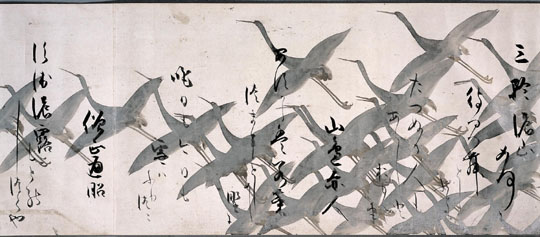One of fall's annual pleasures is the Big Autumn Exhibition at the Tokyo National Museum, and this year the organizers have pulled out all the stops with "Treasures by Rinpa Masters," a breathtaking show of Rinpa art in celebration of the 350th anniversary of Ogata Korin's birth. Korin (1658-1716) is considered the leading exemplar of the school of decorative art that was later named after him: Korin plus ha (school of). This exhibition is divided into three sections devoted to the works of Rinpa — as the school is now known — artists from the early, middle and late Edo Period (1603-1867) and includes masterpieces of painting, lacquerware, ceramics and textiles selected from Japanese and foreign collections.
One of the profound effects of the establishment of the Tokugawa shogunate in Edo (present-day Tokyo) at the beginning of the 17th century was economic prosperity and an energetic renaissance of traditional arts. Coincidental too was the emergence of a new urban culture as tradesmen and craftsmen catered to a booming market for luxury goods, while a city milieu of kabuki, sumo and the pleasure quarters, evolved for entertainment. The old Eastern imperial capital of Kyoto and the new Western political capital of Edo soon developed their own completely different flavor and character; that of Kyoto being infused with the refined style of courtiers, tea masters and temple clerics, while Edo culture was more brash, more mercantile — and probably more fun.
Rinpa art is associated more with Kyoto, its nobles and elite craftsmen. Its artistic tradition is influenced by courtly, poetic ideals, together with the practice of Zen and the tea ceremony, and is all much inspired by the area's rich nature. The sober, monochrome aesthetics of the tea ceremony had held a monopoly on taste through the 15th and 16th centuries, and it is as if in defiance of this — as well as to celebrate the new political stability and affluence — that extraordinarily talented artists and craftsmen explored a freer, more exciting use of colors, pattern and form. Foremost among them were followers of Rinpa.



















With your current subscription plan you can comment on stories. However, before writing your first comment, please create a display name in the Profile section of your subscriber account page.